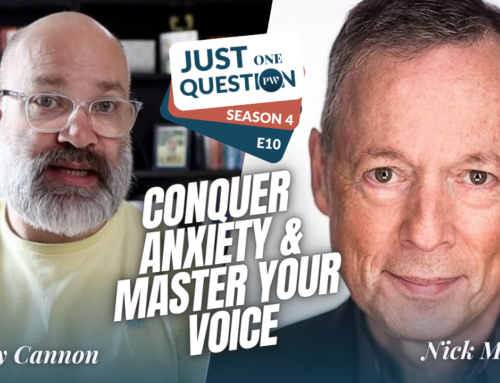Most public speakers whom I’ve been checking in with of late are impatient to get back to face-to-face presentations. And those are on the way; anecdotally, I’m hearing of more and more in-person events being scheduled or planned for October and after. I have little doubt that, barring some huge pandemic step backwards, we will be mostly in person by early 2022. Of course, I hope the wheels of time turn faster than that, but this whole pandemic era has moved much more slowly than most people imagined it possibly could.
We’ve had to re-adjust our expectations over and over again. I remember thinking in March 2020, during the first couple of weeks of the pandemic shutdown, that we’d be back to normal by the early summer.
That seems so quaint and long ago, now.
One of the interesting side effects of the pandemic is that many of us have gotten less used to social interaction. Even extreme extroverts have reported to me that they have found themselves feeling nervous about going back to the office and interacting with other people more or less normally.
These feelings of social awkwardness jibe with a study done of some scientists who spent nearly a year in isolation in the Antarctic, doing research. They found that when they returned to their normal lives (pre-pandemic) they were nervous about simple trips to the grocery store. They had to re-learn how to be with other people again.
As a speaker, you will most likely go through a similar readjustment process, with higher stakes. Be prepared, the first couple of times you are on an actual stage, for the adrenaline to course through your system more vigorously than ever. You’re using ‘muscles’ that are out of shape, so be ready to feel jittery and awkward – even if you are also very excited to be speaking in person again.
In addition to the usual techniques you use to get through the adrenaline cycle, such as breathing, self-talk, gentle exercise, positive visualization, and so on, here’s a less well-known technique to try. Divide the stage up into a number of sections – three to five, depending on the size of the stage and audience. Now mark your speech up with the same number of sections. Then, for each section of the speech, go to a different point on the stage and address the part of the audience right there in front of you. Think of your speech as a series of brief conversations you are going to have with small numbers of people – the sub-sections of the audience.
Here’s the key step: for each section, note how the audience section is responding non-verbally. The goal is to focus on their body language rather than your own. That will help you get out of your own way — and minimize your nerves. If it is appropriate, you can take the process a step further and check in with the audience for their verbal responses. You can ask open-ended questions like, “have you seen something similar in your experience – tell me about it,” or “how might you apply this in your organization?”
You will find that this conversational approach, dividing the audience up into smaller groups and inviting them to respond, will in most cases create an authentic, engaged dialogue between you and the audience. And isn’t that a good way to ease back into the social convention of public speaking after we’ve been isolated for so long?









Leave A Comment